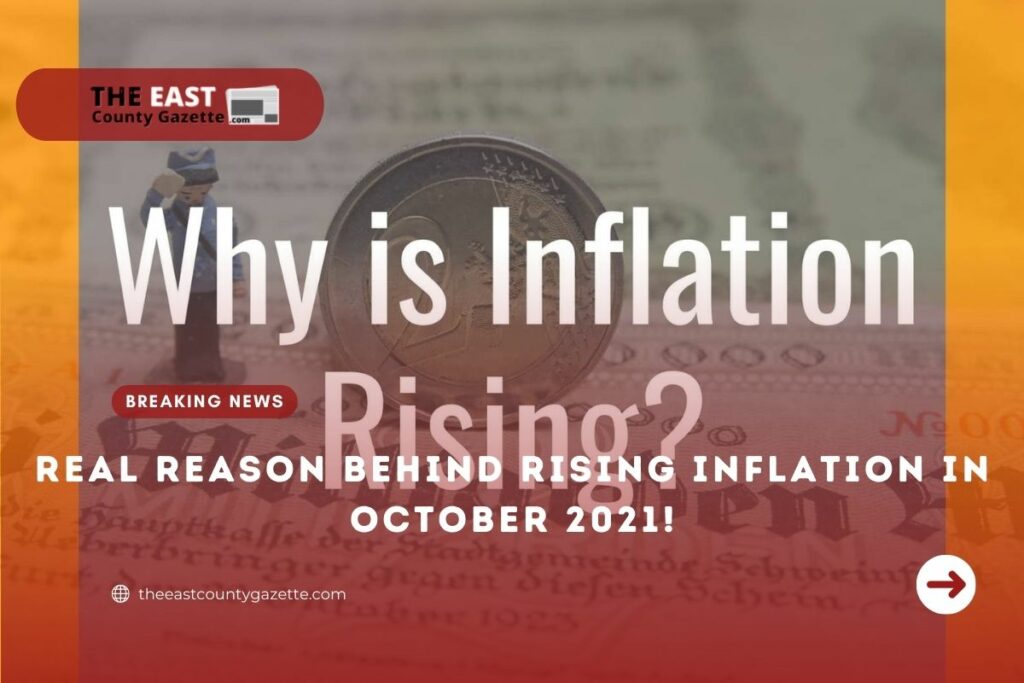Price increases exceeded most economists’ forecasts and accelerated to 6.2% in October 2021 – the fastest gain in over three decades. Many Americans will not be surprised to learn that prices are rising while shopping for shoes and steaks, eating out at restaurants, and filling their gas tanks.
The current big debate among economists, government officials, including Treasury Secretary Janet Yellen, revolves around the question of whether these soaring costs are temporary or permanent.
As part of its effort to stabilize the economy, companies, and consumers after a lengthy period of high inflation, the Federal Reserve reiterated on Nov. 3, 2021, that it will be temporary.
Not everyone is on the same page – including members of the Fed.
An increasingly loud chorus of economists, strategists, and business executives are warning that high prices will remain the norm well into 2022 and beyond.
Heightened Demand
Since May 2021, inflation has been rising at a rate of about 5% per year. The Fed has set a 2% growth target, but that’s more than double. More so, price increases are caused by a variety of factors.
Deeper Peek at Demand
While consumers’ demand dropped early in the pandemic due to lockdowns and rising unemployment, it has now risen for good purchases made online.
E-commerce activity has simply increased to previously unimaginable levels since the pandemic began. The market is unable to meet the demand for products in the amount that it can produce or ship. It isn’t uncommon for people to order everything in restaurants, hardware stores, and supermarkets now.
Many retailers, including Macy’s, Target, and others, have been struggling with limited inventory and higher freight costs during this crisis.
These trends have created more demand than the delivery carriers can accommodate, stretching their ability to deliver products. For example, the holiday shopping season is predicted to have 4.7 million packages a day beyond what the system can absorb or deliver. Storing these packages for even a short period costs a huge sum.
Given there is great difficulty finding drivers, containers, and labor across industries, big retailers are offering generous education and other benefits to both attract and keep employees on hand as a means of adding capacity.
Read More: Increasing Inflation Puts Heavy Burden on Consumers Right Before Holiday Season!
Supplies Are Low
Supply chains continue to be a mess – and will continue to be so.
Several bottlenecks have emerged across Asia, straining supply chains’ ability to deliver on time. Global shortages of drivers and other workers complicate the expansion of capacity and the fixing of other problems plaguing supply chains, so the logistics industry cannot pull itself out of the mud it’s in.
This creates a shortage of products getting through that limits competition, causing price increases.
Many large container ships are continually idling near ports in Los Angeles, New York, and other cities across the globe, causing merchandise to sit, waiting to be unloaded. In Southern California alone, there are over 500,000 shipping containers with about 12 million metric tons of goods.
The number of workers and drivers to unload the cargo has been reduced despite efforts to extend the port’s operating hours.
The additional inventory that businesses carry as a result of such delays costs them money more.
Consider Nike, whose shoe production is heavily dependent on Vietnam. Lockdowns in Vietnam caused Nike to lose 10 weeks of production. The average time it takes 80 days to transport shoes from Asia to retailers in North America has doubled since the pandemic began. In turn, shoe prices have increased as well.
Alternatively, Malouf, a furniture retailer based in Utah, reports stock levels of only 55% because of shipping delays. Spare parts shortages lead to cars getting stuck in garages. In the past year, furniture prices for living rooms, kitchens, and dining rooms have increased 13.1%.
We can also look at one specific product: Bullfrog Spa’s M9 hot tub. This product is made up of 1,850 parts. Manufacturing time has increased from six weeks to six months due to supply chain disruptions. This affects all industries equally.
Read More: How Rising Inflation is Affecting Unemployed Food Stamp Recipient Struggles?
Difficulty Of Resolving the Problem
As a result, the supply chain issues are not likely to end anytime soon. The holiday season and beyond will only see an increase in consumer demand. Therefore, inflation will not be decreasing any time soon.
All of these challenges will last into at least 2022, according to corporate executives. Others expect problems to last until 2023.
By the end of the year, Bloomberg surveyed economists who believe inflation will slow to 2.6%. Though a modest improvement, that’s still much higher than the pre-pandemic average of 1.8% and outside the Fed’s target range. After the October Consumer Price Index report, it’s unclear if economists have changed their expectations
However, consumers will have to adjust to higher prices in the future. That’s just how things are now; the new normal they call it.

